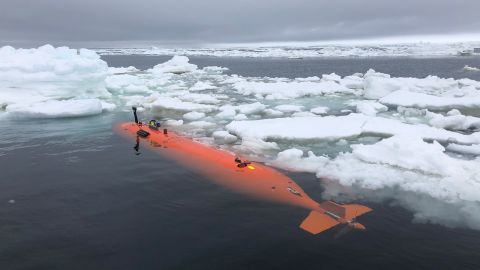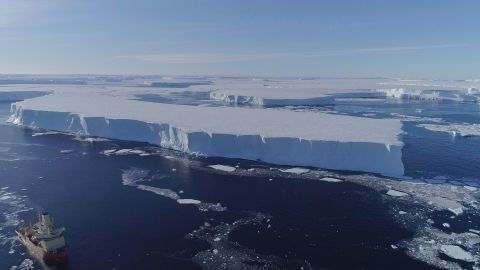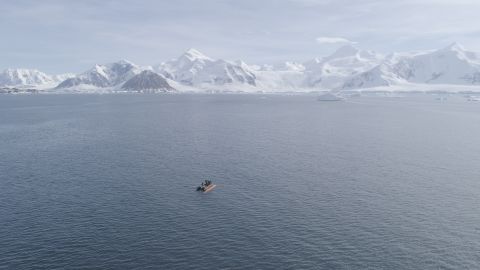‘Doomsday glacier,’ which could raise sea level by several feet, is holding on ‘by its
[ad_1]
CNN
—
Antarctica’s so-called “doomsday glacier” – nicknamed because of its high risk of collapse and threat to global sea level – has the potential to rapidly retreat in the coming years, scientists say, amplifying concerns over the extreme sea level rise that would accompany its potential demise.
The Thwaites Glacier, capable of raising sea level by several feet, is eroding along its underwater base as the planet warms. In a study published Monday in the journal Nature Geoscience, scientists mapped the glacier’s historical retreat, hoping to learn from its past what the glacier will likely do in the future.
They found that at some point in the past two centuries, the base of the glacier dislodged from the seabed and retreated at a rate of 1.3 miles (2.1 kilometers) per year. That’s twice the rate that scientists have observed in the past decade or so.
That swift disintegration possibly occurred “as recently as the mid-20th century,” Alastair Graham, the study’s lead author and a marine geophysicist at the University of South Florida, said in a news release.
It suggests the Thwaites has the capability to undergo a rapid retreat in the near future, once it recedes past a seabed ridge that is helping to keep it in check.
“Thwaites is really holding on today by its fingernails, and we should expect to see big changes over small timescales in the future – even from one year to the next – once the glacier retreats beyond a shallow ridge in its bed,” Robert Larter, a marine geophysicist and one of the study’s co-authors from the British Antarctic Survey, said in the release.


The Thwaites Glacier, located in West Antarctica, is one of the widest on Earth and is larger than the state of Florida. But it’s just a faction of the West Antarctic ice sheet, which holds enough ice to raise sea level by up to 16 feet, according to NASA.
As the climate crisis has accelerated, this region has been closely monitored because of its rapid melting and its capacity for widespread coastal destruction.
The Thwaites Glacier itself has concerned scientists for decades. As early as 1973, researchers questioned whether it was at high risk of collapse. Nearly a decade later, they found that – because the glacier is grounded to a seabed, rather than to dry land – warm ocean currents could melt the glacier from underneath, causing it to destabilize from below.
It was because of that research that scientists began calling the region around the Thwaites the “weak underbelly of the West Antarctic ice sheet.”

In the 21st century, researchers began documenting the Thwaites’ rapid retreat in an alarming series of studies.
In 2001, satellite data showed the grounding line was receding by around 0.6 miles (1 kilometer) per year. In 2020, scientists found evidence that warm water was indeed flowing across the base of the glacier, melting it from underneath.
And then in 2021, a study showed the Thwaites Ice Shelf, which helps to stabilize the glacier and hold the ice back from flowing freely into the ocean, could shatter within five years.
“From the satellite data, we’re seeing these big fractures spreading across the ice shelf surface, essentially weakening the fabric of the ice; kind of a bit like a windscreen crack,” Peter Davis, an oceanographer with the British Antarctic Survey, told CNN in 2021. “It’s slowly spreading across the ice shelf and eventually it’s going to fracture into lots of different pieces.”
Monday’s findings, which suggest the Thwaites is capable of receding at a much faster pace than recently thought, were documented on a 20-hour mission in extreme conditions that mapped an underwater area the size of Houston, according to a news release.
Graham said that this research “was truly a once in a lifetime mission,” but that the team hopes to return soon to gather samples from the seabed so they can determine when the previous rapid retreats occurred. That could help scientists predict future changes to the “doomsday glacier,” which scientists had previously assumed would be slow to undergo change – something Graham said this study disproves.
“Just a small kick to the Thwaites could lead to a big response,” Graham said.
[ad_2]
Read More:‘Doomsday glacier,’ which could raise sea level by several feet, is holding on ‘by its
